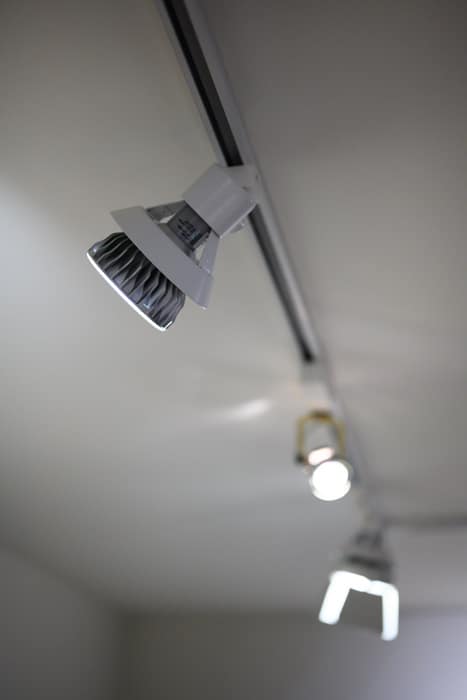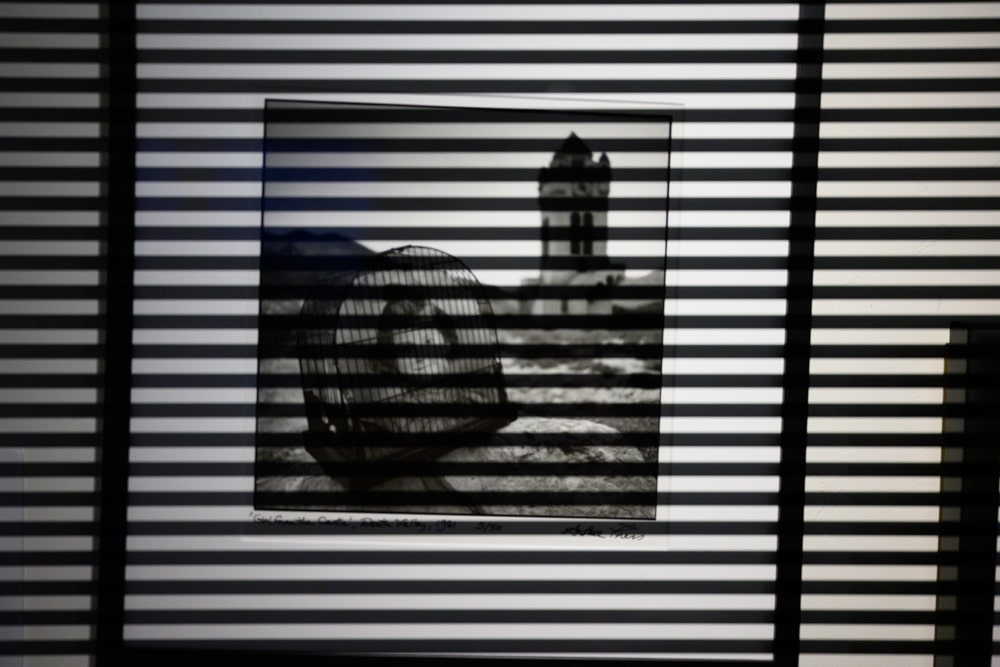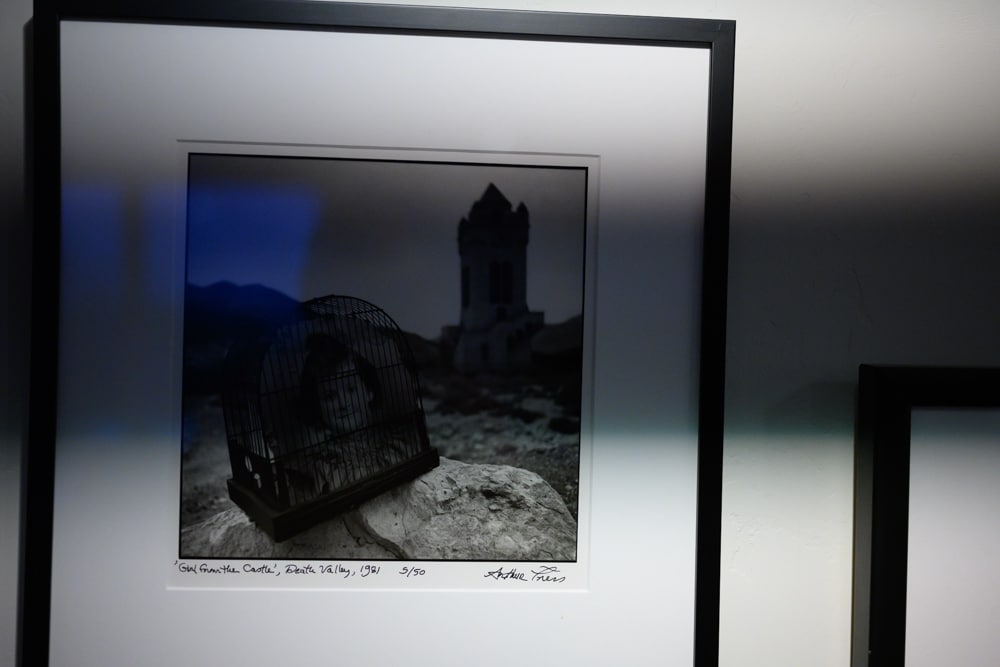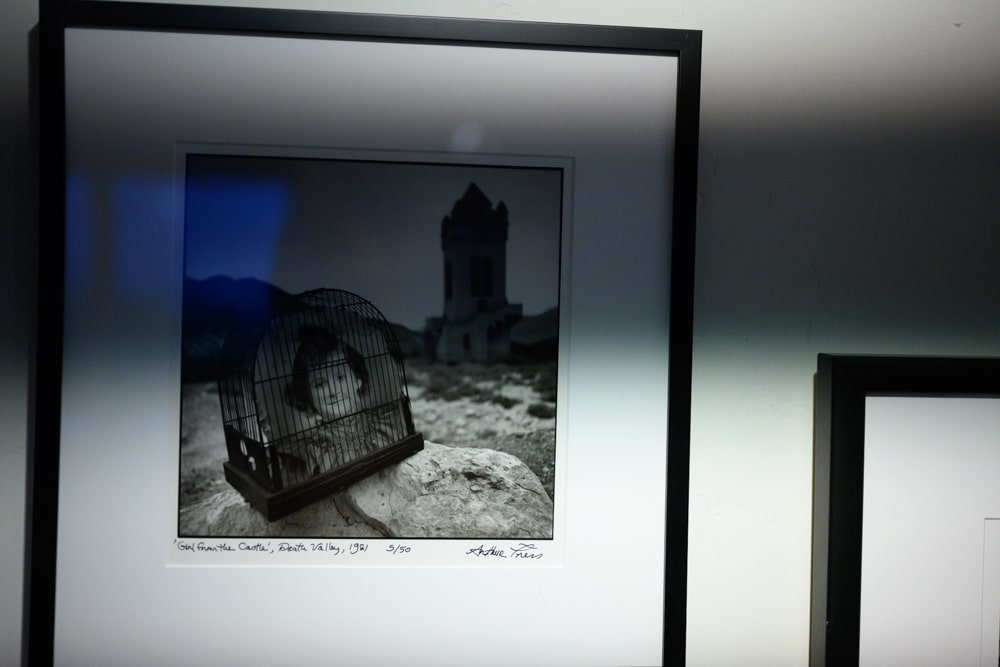This is one in a series of posts on the Nikon Z6 and Z7. You should be able to find all the posts about that camera in the Category List on the right sidebar, below the Articles widget. There’s a drop-down menu there that you can use to get to all the posts in this series; just look for “Nikon Z6/7”.
Since the advent of fully-electronic (but not global) shutters, there have been many complaints about lighting banding. Usually, if you’re not dealing with stage lighting, the modulation frequency is twice the mains frequency, and you can find a shutter speed to ameliorate the problem.
But not always.
I recently encountered this sneaky little light — it’s the one closest to the camera.
When you dim it a bit and take a Z7 silent-shutter picture with it as the illuminant:
19 or so stripes, right? 1/16 second or so scan time, so the modulation frequency is about 19*16, or around 300 Hz.
Now let’s take picture with EFCS:
And with the fully-mechanical shutter:
So, in this brave new lighting world, using an old-fashioned shutter is no panacea.
By the way, did you notice that the EFCS first curtain has a sharper cutoff then one in the the all-mechanical shutter?




Jim,
Isn’t the modulation the dimmer, not the light itself? I interpreted that from your explanation.
If so, wouldn’t it be the same for all lights on that dimmer? If not, any idea why?
Michael
The dimmer just modulates pulse widths at the mains frequency. Some LED fixtures, like this one, use that information, but store energy and do their own pulse-width modulation at a higher frequency. Other LED fixtures on this same circuit are modulated at 120 Hz with softer edges.
Jim,
A very illuminating (pun intended) demonstration.
It is important to know which lamps cause this banding. Many LCDs running on AC demonstrate this problem, as do fluorescent lamps driven by magnetic ballast and metal halide lamps. I would presume that professional LCDs such as your Wescotts are DC powered and are free of this flickering. Most CFLs use electronic ballast at high frequency and the flicker is not apparent at normal shutter speeds. Your comments would be appreciated.
Bill Janes
I agree with everything you said. These days, testing is necessary in an unfamiliar environment.
I shoot in a lot of venues and flickering is one basic problem since the Leds came.
True it is often not the light but the dimmer / steering electonics that causes it. In some cases you see the flickring only until you see your photos back in the computer… too late!
Yesterday i shot a classical concert in a hall were they used flicker free light… being silent was the only way to make photos so i am happy that it worked out.